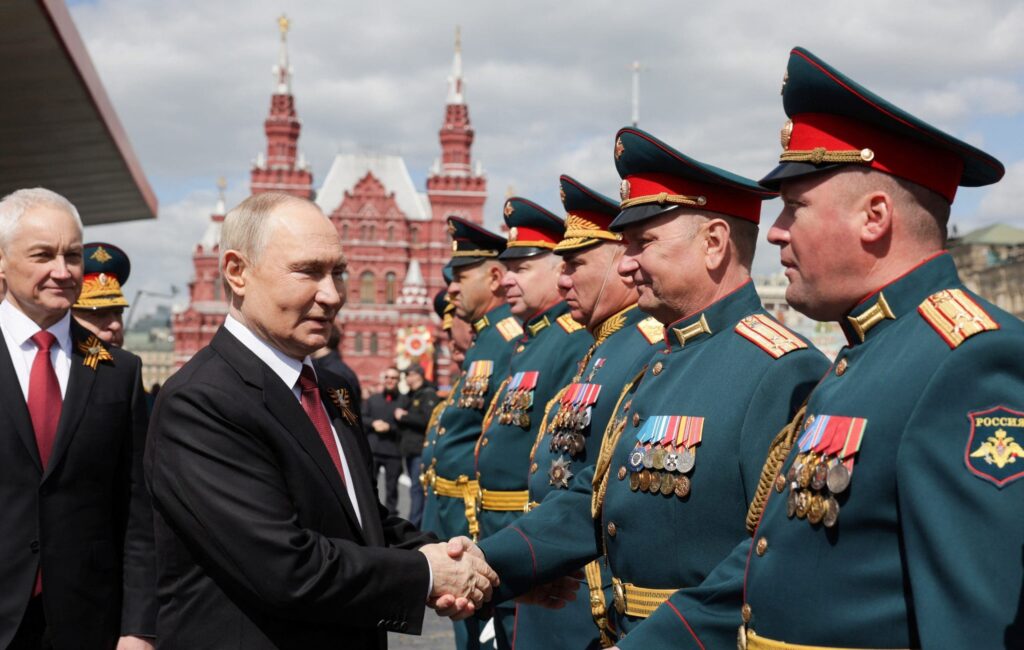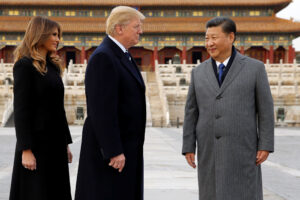Vladimir Putin’s grip on power is weakening—not in some distant future, but right now. The collapse is not theoretical, nor symbolic. It’s visible in the burning wreckage of Russian airbases, in the unguarded railways sabotaged deep inside the country, and in the growing number of ordinary Russians willing to resist.
Ukraine’s drone war has moved beyond the battlefield. It’s striking the very heart of Russia’s military-industrial complex and exposing the Kremlin’s growing inability to wage a modern war. This past June alone, Ukrainian drones obliterated a staggering portion of Russia’s advanced air power: 30% of Tu-95 bombers, 14% of Su-57 stealth fighters, and 5% of Su-34s were destroyed or critically damaged. The once-vaunted Russian air force is being dismantled before it even takes off.
And the hits just keep coming. A targeted strike on the Kupal electromechanical plant—Russia’s sole manufacturer of the TOR-M2 air defense system—has rendered Moscow incapable of replenishing one of its most critical lines of defense. Russia can’t even defend the factory that builds its defenses.
An Empire Exposed
Russia’s skies are no longer safe. More than 250 airport shutdowns have occurred across the country this year alone due to Ukrainian drones. It’s not just a logistical nightmare—it’s a psychological one. Russians are watching explosions light up their own skies. They’re scrolling through Telegram and seeing footage of cities once considered untouchable reduced to smoldering targets.
For all the Kremlin’s talk of control and “special military operations,” the illusion is cracking. The war isn’t just being lost on the front lines—it’s unraveling from within.
Across Russia, arson attacks, rail sabotage, and even calls for open revolt are emerging from the shadows. These aren’t isolated events. More than 100 documented sabotage incidents have targeted Russian logistics. And they aren’t Ukrainian operatives—they’re Russians. The resistance is homegrown.
A Crumbling Core
Unlike the Soviet Union, modern Russia can’t hide reality from its people. Everyone has Telegram. News, even if censored, still leaks through. And it’s not the rural Siberian citizen who’ll ultimately shift the political tides—it’s the well-connected elites in Moscow and St. Petersburg. They’re tech-savvy, resource-rich, and increasingly aware that the regime is bankrupt—morally, militarily, and economically.
Dissent isn’t just ideological—it’s practical. Putin’s war has relied heavily on ethnic minorities and peripheral republics, who are suffering devastating casualty rates. Buryats (Buddhist) are dying at 7x the national average. Dagestanis (Muslim) at 6x. Their communities are pushing back. Women in Dagestan have protested in the streets, physically confronting police and demanding their sons return.
In response, the Kremlin has had to send in troops—not to the front lines in Ukraine, but to its own republics to suppress rebellion. That’s a sure sign of imperial overreach. When a regime starts fighting its own people, it’s already losing.
A Civil War in Disguise
Inside Ukraine, several legions of Russian defectors are fighting for Kyiv’s cause. These aren’t just mercenaries—they’re Russian citizens who see the war for what it is: a threat to their own homeland. Groups like the Freedom of Russia Legion, the Russian Volunteer Corps, the Siberian Battalion, and even Chechen dissidents have taken up arms against Putin’s regime.
Some of them played key roles in brief occupations of Kursk and Belgorod—Russian territory. The Kremlin tried to ignore it, but the optics were devastating. Russians fighting Russians is no longer a fantasy. It’s happening, and the public knows it.
Even within the intelligence apparatus, cracks are showing. The National Republican Army, a domestic anti-Kremlin group possibly tied to FSB dissidents, was reportedly behind the 2022 assassination of Darya Dugina, daughter of Putin’s key ideologue. Meanwhile, hacking groups tied to Russian security services are leaking internal data and undermining the regime from within.
Putin’s famed “vertical of power” is rotting from the inside.
The Colonial Lie
Russia has always styled itself as a unified empire, but that narrative is crumbling. The heavy reliance on minority troops—used as expendable cannon fodder—reveals the truth. The regime treats these regions like colonies. “One Russian people” is a fiction when it’s Moscow’s sons who stay home and Dagestan’s sons who die.
That’s why protests are erupting in the regions. That’s why officers are disappearing. And that’s why thousands of Russian soldiers now seem to want their equipment destroyed by drones—so long as they survive to go home. These aren’t warriors. They’re men trapped in a war they don’t believe in.
The End Is No Longer Unthinkable
Putin’s system may appear monolithic, but all authoritarian regimes collapse—quickly and often without warning. History is littered with examples. As internal pressure mounts—military failures, economic collapse, and elite discontent—a breaking point is inevitable.
This won’t end in a democratic uprising on Red Square. But it could end in a palace coup, a mutiny, or an elite-led power grab. The oligarchs, generals, and spies are already doing the math: Life after Putin looks a lot more stable than life with him.
For now, Ukraine is doing more than defending its borders. It’s shredding the myth of Russian supremacy. And the Russian people—silently, subversively—are doing their part.
Putin’s war isn’t just failing. It’s imploding.



